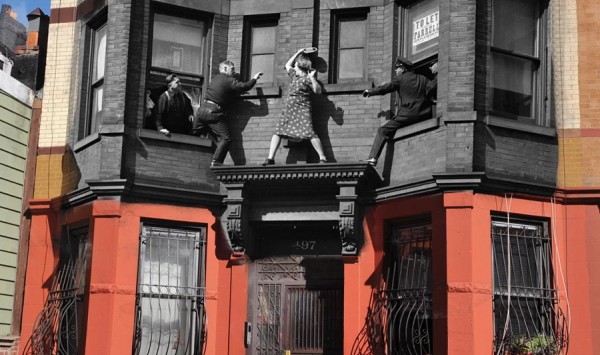STEP INSIDE A ’70s BROOKLYN BROWNSTONE…
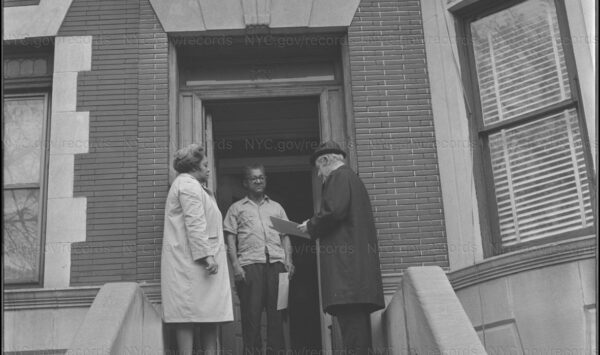
******************************************************************************************************************************** Brownstone Detectives investigates the history of our clients’ homes. The story you are about to read was composed from research conducted in the course of one of those investigations. Do you know the history of YOUR house? ********************************************************************************************************************************In 1970, officials with the New York City Housing and Development Administration (HDA) paid a visit to the owner of No. 23 Virginia Place in Crown Heights. The reason for the visit was assisting citizens with the rehabbing of their homes. The city wanted to get some great shots of their beureuacrats helping everyday folks, and so they took a photographer along with them to show them doing ust jthat. As a result of the public affairs shoot, we have today some great images of what No. 23 Virginia Place looked like in 1970. Enjoy! Follow @BrownstoneDetec Share ———————————————————————————————————————– The Brownstone Detectives Brownstone Detectives is an historic property research agency. Our mission is to document and save the histories of our clients’ homes. From our research, we produce our celebrated House History Books and House History Reports. Contact us today to begin discovering the history of your home. Follow @BrownstoneDetec Share ———————————————————————————————————————– The Brownstone Detectives Brownstone Detectives is an historic property research agency. Our mission is to document and save the histories of our clients’ homes. From our research, we produce our celebrated House History Books and House History Reports. Contact us today to begin discovering the history of your home.
BURGLAR-ON-A-SHELF, No. 1141 DEAN ST (1911)
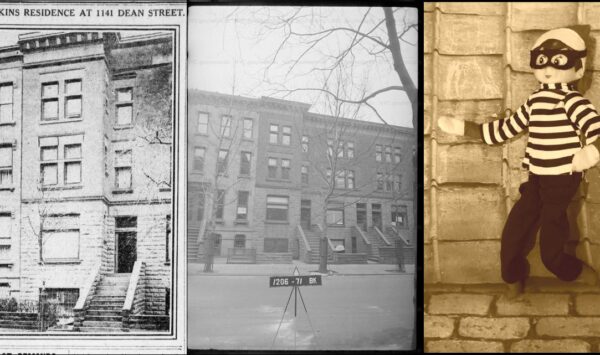
******************************************************************************************************************************** Brownstone Detectives investigates the history of our clients’ homes. The story you are about to read was composed from research conducted in the course of one of those investigations. Do you know the history of YOUR house? ******************************************************************************************************************************** Nearly a month after Christmas of 1910, a daring brownstone burglary occurred. (Or, at least, it was thought to have come to pass.) The incident took place in a fashionable neighborhood of Brooklyn – where such acts are rarely mentioned (outside of the servants). The burglar was never discovered, although a large number of police reserves and detectives had responded to the call and combed the house and the neighborhood. The police never solved the crime – nor did they even prove that it had ever taken place. But their presence on the upper-crust street caused quite the hubbub where many upstanding residents lived – many of whom feared their residence would be the next target. NOW YOU SEE ME, NOW YOU DON’T “The police of the Grand avenue station are to-day stil investigating the circumstance surrounding the calling out of the reserves and detectives to 1141 Dean street, the residence of J. C. Hipkins,” noted the Brooklyn Daily Eagle on 21 January 1911. Hipkins, whose full name was John Clifton Hipkins, was an insurance broker who lived in a “fashionable” neighborhood, the residents of which, the Eagle said, were “still agitated over the occurrence, which transpired about 5 o’clock Thursday afternoon. “The Hipkins residence,” the paper continued, “is just across […]
A SPOTLESS TOWN IN SPOTTY CROW HILL (1903)
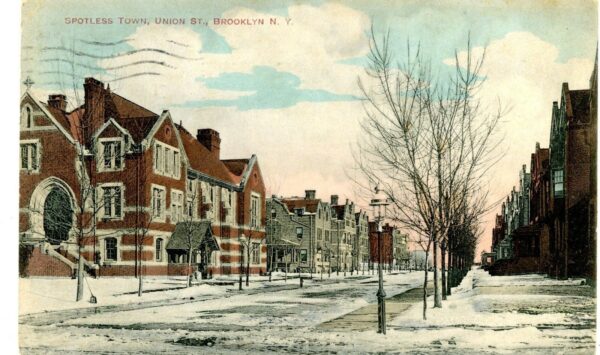
******************************************************************************************************************************** Brownstone Detectives investigates the history of our clients’ homes. The story you are about to read was composed from research conducted in the course of one of those investigations. ******************************************************************************************************************************** It was a novelty back then. An entire block of newly built houses was connected with underground cast iron heating pipes. “They’re all heated from a central heating plant,” the ad for the new houses stated. “To be free from worrying about the heating of one’s house is a blessing that you’ll appreciate.” “SPOTLESS TOWN” Frederick W. Rowe built them, and may have been inspired to use the name by a recent Broadway musical of the same title (which incidentally featured “a pair of midgets in a baby elephant costume and a dog trained to grab culprits by the seat of the pants” – it closed after one week). Who could fail, though, to see the sense of using a known name – one which, additionally, augured cleanliness?. Buyers were more and more attracted by the new homes being built in this “Eastern Parkway” section of town. Previously known as Crow Hill, comprised of a collection of shanties and pig sties, it entered a transitional stage and would later become the upper middle class Crown Heights around 1915. And these buyers were less and less interested in living in homes that already existed in the older areas – that were…well….less spotless. So the choice of name seemed appropriate for marketing purposes. BUT…CENTRAL HEATING??? By 1903, while central heating of […]
THE BABY FARM OF UTICA AVENUE (1890)
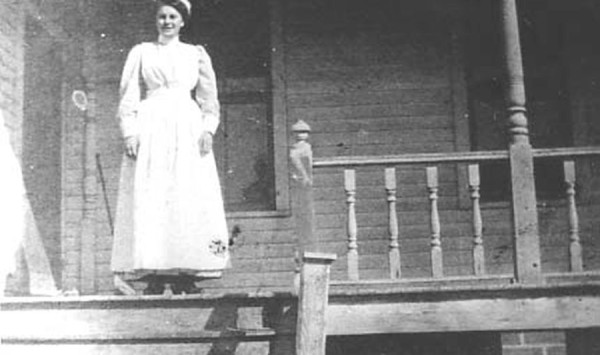
******************************************************************************************************************************** Brownstone Detectives investigates the history of our clients’ homes. The story you are about to read was composed from research conducted in the course of one of those investigations. Do you know the history of YOUR house? ******************************************************************************************************************************** The red flags began to go up slowly – one by one – as babies began to die. After Annie Smith, 1 month and 14 days old, it was wee Cora Tanner, just 7 days old. With two infant deaths being reported within the same month from a private residence at 126 Utica Avenue, Inspector Corcoran of the Department of Health was detailed to look into the matter. THE INSPECTION Arriving at 126 Utica Avenue, Inspector Corcoran discovered a “two story frame structure in which are available for maternity and nursery purposes four small rooms and an attic apartment.” Tending this facility, according to the Brooklyn Standard Union, was a Mrs. Emily V. Wilson, her daughter, and a nurse. Onsite, though, was also one baby and five women “patients.” Corcoran asked Mrs. Wilson to show her license, upon which request “she produced two documents given her by the Department of Health.” The first, dated 12 September 1886, granted permission to board four children at 100 Utica avenue, while the other bearing the date of 18 June 1888, permitted her to keep six children at 795 Herkimer street. She had no license for 126 Utica Avenue. At this point the inspector asked to view the house’s register, “which the law requires of […]
THE SLOW MUTATION OF “THE REGINA” (1902)
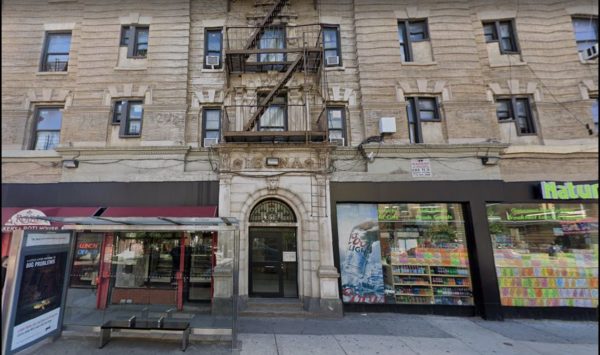
******************************************************************************************************************************** Brownstone Detectives investigates the history of our clients’ homes. The story you are about to read was composed from research conducted in the course of one of those investigations. Do you know the history of YOUR house? ******************************************************************************************************************************** In the historical research work we do for clients, we uncover old photos of their buildings in newspapers and in other archives. It is common to see that changes have taken place with these structures over the years, but these changes are not always readily apparent. Check out the following pics of this Crown Heights apartment building. See what you notice has changed in almost 120 years. Caption: “This is a picture of the Regina, a large apartment house recently bought by John Mollenhauer, the sugar refiner. It stands on the southwest corner of Nostrand avenue and Pacific street. It was built by E. J. Maguire. The building is in the heart of the St. Marks section. The transaction was partly exchange and partly cash. The building is valued at $90,000. Mr. Mollenhauer has invested extensively in property in the St. Marks section, owning several other apartment houses built by Mr. Maguire and many fine private houses. Mr. Mollenhauer lives in the Eastern District.” Follow @BrownstoneDetec Share ———————————————————————————————————————– The Brownstone Detectives Brownstone Detectives is an historic property research agency. Our mission is to document and save the histories of our clients’ homes. From our research, we produce our celebrated House History Books and House History Reports. Contact us today to begin […]
A BUFFALO SOLDIER ON HERKIMER ST. (1930)
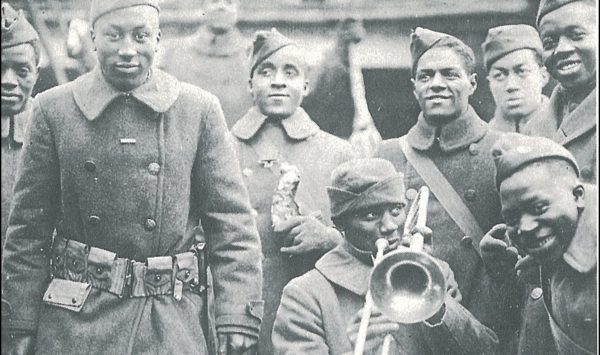
******************************************************************************************************************************** Brownstone Detectives investigates the history of our clients’ homes. The story you are about to read was composed from research conducted in the course of one of those investigations. Do you know the history of YOUR house? ******************************************************************************************************************************** It was 1918, and Harry Francis Cole had only three options. As an African-American in the United States, drafted into the military when the country was entering the First World War, he could: 1) work as a non-combatant – laboring as a stevedore, digging trenches, graves, and latrines, or building hospitals, roads, bridges, and railroad lines, 2) fight in a segregated unit – as an American soldier with the French Army, whose soldiers did not object to fighting alongside African-American troops, or 3) join a military band – one of the many brass bands in the European theater that were composed of African-American musicians. Cole, already a budding musician back home in Philadelphia, would naturally find himself in the last group, a horn player in one of the units of the 92nd Division – or, as the military unit was more commonly known, the venerated “Buffalo Soldiers.” BORN TO WAIL Born one of four children to William and Carrie Cole in Philadelphia in 1896, Harry Cole was never really destined to be a fighter. When he was a boy he was even then sure that his future was in music. He likely caught the bug when ragtime was all the craze, but when he heard the new sound of jazz in the […]
THE SINGING DOG OF LINCOLN PLACE (1915)
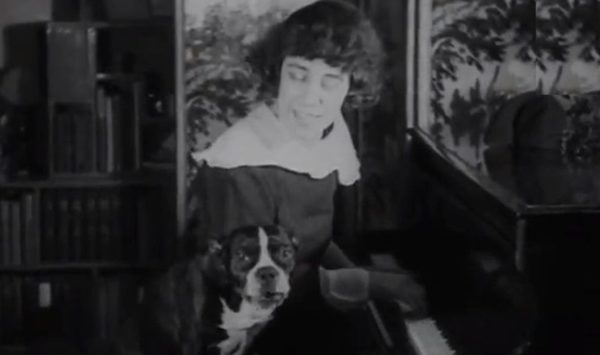
******************************************************************************************************************************** Brownstone Detectives investigates the history of our clients’ homes. The story you are about to read was composed from research conducted in the course of one of those investigations. Do you know the history of YOUR house? ******************************************************************************************************************************** Nothing makes front page news like the ridiculous or the sublime. Just over 100 years ago, the stage was certainly given over to the ridiculous. That year – 1915 – produced the first-ever crooning canine. And “Bunny,” the French bulldog was its name- or, rather, was it “Gaby,” the French bulldog – but, perhaps, it was “Bunny”? This confusion, it seemed, was the apex upon which would spin the entire ever-dizzying melodrama concerning the ownership of said dog – and to obscure matters even slightly further, there was a total of three individuals who seemed to be quite certain that each was the master to this now-famous dog. The contest, thus, was set, the curtains prepared to be drawn, and the public waited impatiently to review every detail of the salacious tragedy in an effort to determine the eventual players of the parts – in particular, who would emerge before the footlights in the precious and coveted melodramatic role of supporting actress to Bunny (or Gaby), the singing dog. And the newspapers covered it all, down to its last partially accurate detail. SETTING THE STAGE The Bunny-Gaby trial was certain to provide some good pieces for the newspapers for at least a week as the case weaved its way through the […]
THE RENTERS OF CARROLL GARDENS (2017)
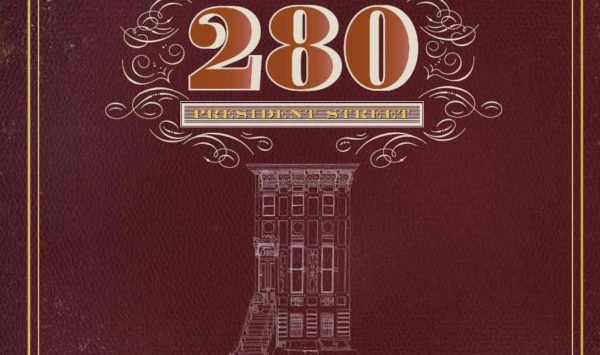
“A British cheese dealer, a newsman who predicted his own death, a leather merchant with a penchant for chorus girls, an alleged wife murderer, a German dentist with political aspirations, a Norwegian hero tugboat captain, and an Italian bomb builder…” These are many of the characters who were discovered during the recent investigation into the history of a Carroll Gardens brownstone. The historic property, No. 280 President Street, is an 1880 brownstone that was, additionally, built by a man who turned out to be the product of a clandestine relationship that rocked Brooklyn in the 1870s with stories of challenged wills, mental illness, and “other” women, presented under such headlines as “BEDEVILED” and “DRAKE’S WILL: His Illegitimate Children Most Carefully Provided for.” For nearly 100 years after the house was completed, No. 280 served its various owners as a rental property. The first owners to actually live in the home, Joachim and Eunice Auer, purchased it in 1979. After navigating redlining, remediating a rat and termite infestation, and entering into a year-long renovation, the Auers settled into enjoying their 2-story and basement home directly across the street from Carroll Park. While the Auers had always been interested in the history of their house (indeed, it was one of the reasons that they bought the house), and after doing some amount of research themselves, they decided to find someone who could more fully track down the history of their home. They turned to a detective – a Brownstone Detective. After a year […]
HORSEWHIPS, HARLEYS & HEROES ON CLASSON
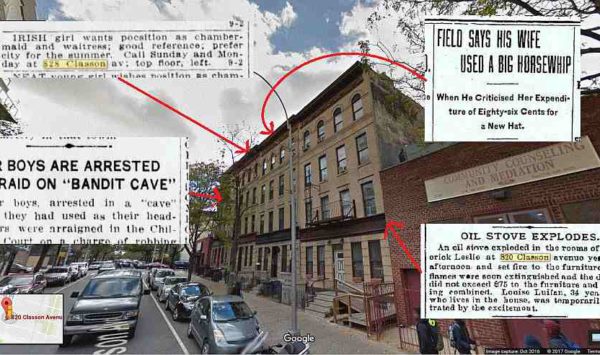
******************************************************************************************************************************** Brownstone Detectives investigates the history of our clients’ homes. The story you are about to read was composed from research conducted in the course of one of those investigations. Do you know the history of YOUR house? ******************************************************************************************************************************** “Every house has a story to tell.” That is how the Brownstone Detectives visualizes every structure, building, and house – as historical repositories for their human narratives. And the Brownstone Detectives, a for-hire historical research team, has investigated many of the stories that are a part of these narratives. And Brownstone Detectives has literally seen them all – from accounts concerning a house’s residents (unrequited love, murder, discrimination, &c.) to those involving the buildings themselves (explosions, fires, hidden rooms, &c.). “If you’re sitting in an old house right now – anywhere in this country – the human drama that’s taken place all around you would surprise the heck out of you,” said lead detective Brian Hartig. …NOW TO THOSE HORSEWHIPS… To give an example of the veritable goldmine of stories linked to every Brooklyn house, the detectives recently scratched the surface on a row of four connected tenement buildings in the Prospect Heights section of Brooklyn. The brick and brownstone tenement buildings at Nos. 820-832 Classon Avenue display a cross-section of the colorful tales that newspapers used to cover in their beats. In fact, due to the transient nature of the residents of these specific buildings over the 120 years of their existence, these structures hold an even larger number of the […]
